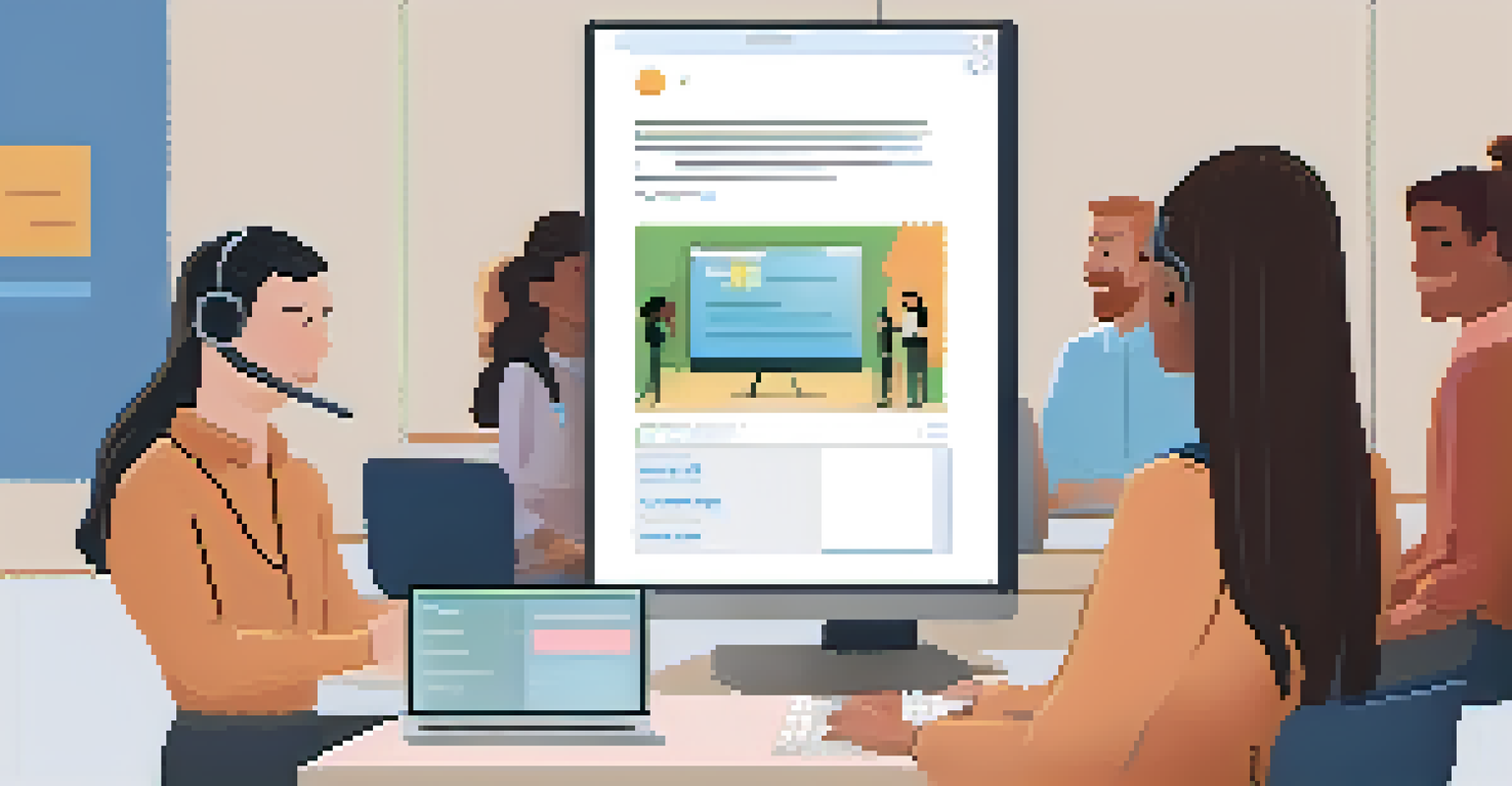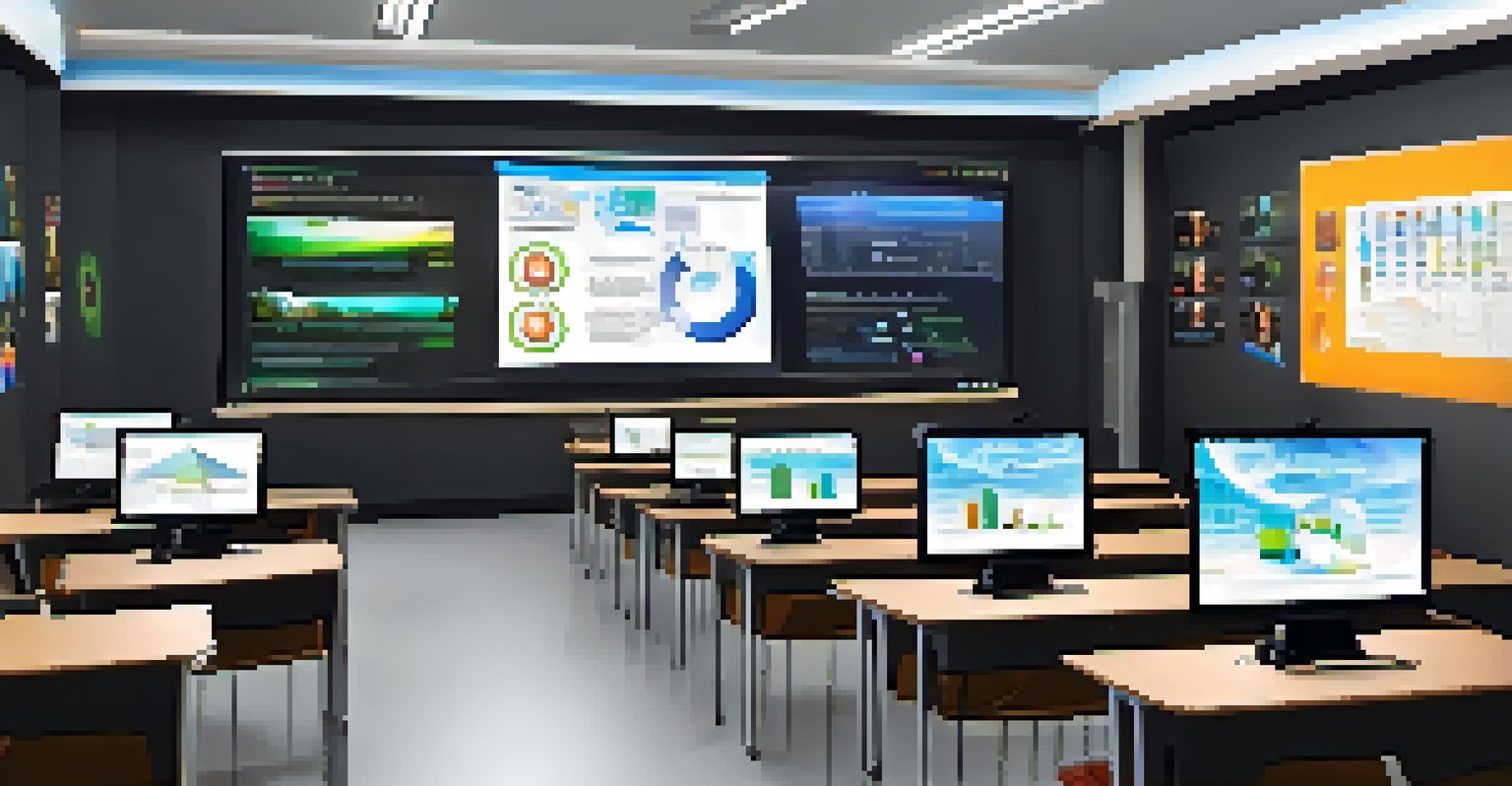The Importance of Real-Time Feedback in Synchronous Learning

Understanding Synchronous Learning and Its Benefits
Synchronous learning refers to real-time educational experiences where learners and instructors interact simultaneously. This approach mimics traditional classroom settings, allowing for immediate dialogue and engagement. By participating in live sessions, students can ask questions and receive instant clarification, making the learning experience more dynamic.
Feedback is the breakfast of champions.
The benefits of synchronous learning extend beyond just immediate interaction. It fosters a sense of community among learners, as they share experiences and insights in real-time. This peer engagement can significantly enhance motivation and retention of the material, creating a vibrant learning atmosphere.
Moreover, synchronous learning can adapt to various formats, including video conferences and live chats. This flexibility allows educators to cater to different learning styles while ensuring that all participants remain engaged. Overall, synchronous learning creates an environment that promotes active participation and collaboration.
The Power of Real-Time Feedback
Real-time feedback is the immediate response given to learners during the learning process. This can take many forms, such as verbal comments, interactive polls, or even digital quizzes. The key here is that feedback is provided during the learning session, allowing students to adjust their understanding on the fly.

One of the main advantages of real-time feedback is that it helps identify knowledge gaps instantly. For instance, if a student struggles with a concept during a discussion, the instructor can address it right away, ensuring that misunderstandings do not linger. This timely intervention can prevent frustration and confusion later on.
Benefits of Synchronous Learning
Synchronous learning enhances engagement and community among learners through real-time interactions.
Additionally, real-time feedback empowers students by validating their efforts and encouraging them to participate more. When learners see that their contributions are acknowledged and addressed, they are more likely to engage actively in discussions. This creates a positive feedback loop, enhancing their overall learning experience.
Enhancing Engagement Through Immediate Responses
Engagement is essential in learning, and real-time feedback plays a pivotal role in keeping students involved. When instructors provide immediate responses, it creates an interactive atmosphere where learners feel valued. This sense of connection can significantly boost enthusiasm and investment in the material.
The greatest gift is not being afraid to question.
For example, consider a scenario where a teacher uses a live poll during a lesson. As students respond, the instructor can instantly share the results and discuss them. This not only validates student input but also opens the floor for further discussion, making the learning experience richer and more engaging.
Moreover, immediate feedback encourages students to take risks in their learning. Knowing that they can receive quick responses allows them to express their thoughts freely without the fear of making mistakes. This fosters a culture of experimentation and exploration, which is vital for deeper learning.
Building a Culture of Continuous Improvement
Real-time feedback contributes to a culture of continuous improvement in synchronous learning environments. Instructors can adapt their teaching strategies based on immediate student responses, ensuring that lessons meet learners' needs. This iterative process allows educators to fine-tune their approaches, enhancing the overall quality of education.
For instance, if multiple students express confusion about a particular topic during a session, the instructor can pivot the discussion to clarify those points. This responsiveness not only improves comprehension but also demonstrates to students that their input is valued. It builds trust and encourages open communication within the classroom.
Real-Time Feedback's Impact
Immediate feedback helps identify knowledge gaps and encourages active participation, improving the overall learning experience.
Additionally, this culture of feedback encourages students to take ownership of their learning. When they receive constructive feedback, they can identify areas for growth and actively work on them. This proactive approach fosters a mindset of lifelong learning, which is essential in today’s fast-paced world.
Utilizing Technology to Facilitate Feedback
In today's digital age, technology plays a crucial role in facilitating real-time feedback in synchronous learning. Platforms like Zoom, Google Meet, and Microsoft Teams offer features such as chat, reactions, and breakout rooms. These tools enable instructors to gather instant feedback while keeping the session interactive and engaging.
For example, educators can use tools like Mentimeter or Kahoot! to create interactive quizzes during a lesson. As students respond, instructors can instantly see the results and address any misconceptions right away. This not only enhances understanding but also keeps students engaged and motivated.
Furthermore, learning management systems (LMS) often include features that allow for real-time feedback on assignments and discussions. By integrating these technologies, educators can create a seamless learning experience that supports immediate interaction and collaboration among students.
Challenges of Implementing Real-Time Feedback
While real-time feedback has numerous benefits, implementing it in synchronous learning can present challenges. One significant hurdle is the potential for information overload. If instructors provide too much feedback at once, students may feel overwhelmed and struggle to process the information effectively.
Additionally, not all learners respond to feedback in the same way. Some may thrive on immediate responses, while others may prefer more time to reflect. It’s essential for educators to be aware of these differences and adapt their feedback methods accordingly to cater to diverse learning preferences.
Technology Facilitates Learning
Advancements in technology enable educators to provide real-time feedback effectively, enhancing interaction and engagement.
Moreover, instructors must balance the need for immediate feedback with the depth of content delivery. Finding the right moment to provide feedback without derailing the lesson can be tricky. Educators should strive for a balance that encourages interaction while ensuring that learning objectives are still met.
The Future of Real-Time Feedback in Learning
As education continues to evolve, the importance of real-time feedback in synchronous learning is likely to grow. With advancements in technology, we can expect even more innovative tools to facilitate immediate responses. This will enhance the learning experience and make education more accessible and engaging for students.
Incorporating artificial intelligence (AI) into educational platforms could also revolutionize real-time feedback. AI can analyze student interactions and provide personalized feedback based on individual needs. This level of customization can help learners receive targeted support, ensuring they stay on track with their learning goals.

Ultimately, the future of synchronous learning will hinge on creating environments that prioritize real-time feedback. By fostering open communication and continuous improvement, educators can empower students to take charge of their learning journeys while cultivating a more collaborative and enriching educational experience.